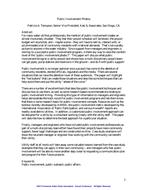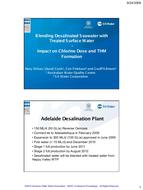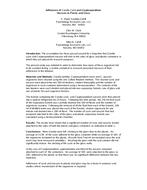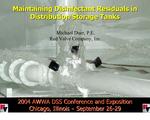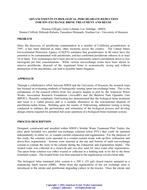Provide PDF Format
AWWA ACE65245
- Public Involvement Phobia
- Conference Proceeding by American Water Works Association, 06/01/2007
- Publisher: AWWA
$12.00$24.00
For many water utility professionals, the mention of public involvement creates an almost involuntary shudder. They fear their project schedule will be blown, the projectbudget will skyrocket, and worse, they will have to talk to, interact with, oraccommodate a lot of community residents with irrational demands. That's not a prettypicture to anyone in the water industry. Since support from managers and engineers isone key to a successful public involvement program, is there any way to raise the comfortlevel of the "public involvement phobic?" This paper discusses what publicinvolvement brings to a utility project and shows how a multi-disciplinary project teamcan get pipes, pump stations and reservoirs in the ground with public support.Public involvement is no longer optional once a project has come to the attention ofcommunity residents, elected officials, regulators and the media. There are severalsituations that can raise the attention level of these audiences. The paper highlightsthe "hot buttons" that can create those situations and describes some techniques that canhelp avoid them and put the utility "ahead of the curve."There are a number of excellent tools that describe public involvement techniques anddiscuss how to use them, as well as some research-based recommendations relating topublic involvement timing. Providing this type of information to managers and engineershelps demonstrate the track record for public involvement programs and lets them knowthat there is some research basis for public involvement concepts. Resources such as thetoolbox recently developed by AWWA, the public involvement matrix developed by theInternational Association of Public Participation, and various AwwaRF reports arereadily available to utilities. In addition, a customized public involvement approach canbe designed for a utility by a consultant working closely with the utility staff. The paperdescribes how to determine the best approach for a particular situation.Finally, managers and engineers who have included public involvement professionals aspart of a multi-disciplinary team effort have found their projects have more communitysupport, fewer legal challenges and are constructed on time. Case study examplesshow the reluctant manager or engineer how working with the community can benefittheir utility. Includes 2 references.
Related Products
AWWA WQTC71597
Blending Desalinated Seawater with Treated Surface Water: Impact on Chlorine Dose and THM Formation..
$12.00 $24.00
AWWA QTC97038
Adherence of Giardia Cysts and Cryptosporidium Oocysts to Plastic and Glass..
$12.00 $24.00
AWWA ACE60046
Advancements in Biological Perchlorate Reduction for Ion Exchange Brine Treatment and Reuse..
$12.00 $24.00

